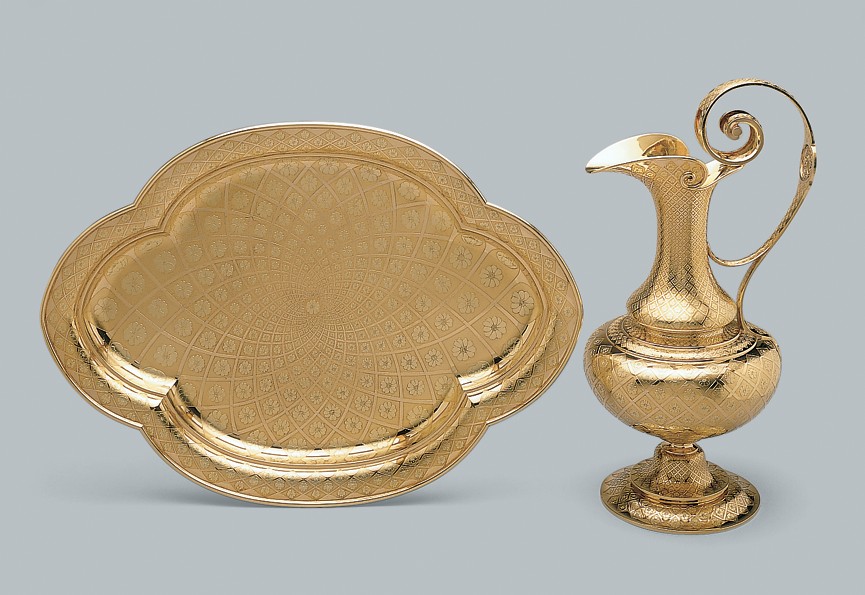Ewer
François-Desiré Froment-Meurice
Froment-Meurice, among the most renowned silversmiths of mid-nineteenth-century Paris, was a historicist whose work embraced medieval, Renaissance, and Islamic styles, which he charged with an abundance of sculptural ornament. Here, in a radical departure both from his own manner and from the prevailing taste of the period, he let the suavely curved profiles speak for themselves, emphasizing them through the use of a single all over trellis and flower-head pattern, adjusted in scale and rhythm to each change of surface (see also 1999.217.2). Combining traditional and new techniques, Froment-Meurice introduced both chromatic and textural variety through chasing, engraving, and electroplated gilding in two colors—yellow and greenish white gold—on a ground that had been partly polished and partly acid etched. Froment-Meurice frequently repeated his models, and this ensemble is one of three known versions. It was perhaps an experimental design made for stock, as the unidentified cipher set into the handle is of a different color gold; this suggests that the cipher was inserted at the time of purchase.
Due to rights restrictions, this image cannot be enlarged, viewed at full screen, or downloaded.
This artwork is meant to be viewed from right to left. Scroll left to view more.



